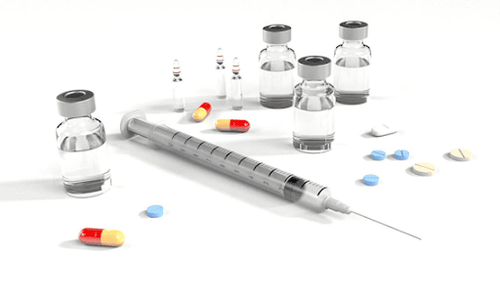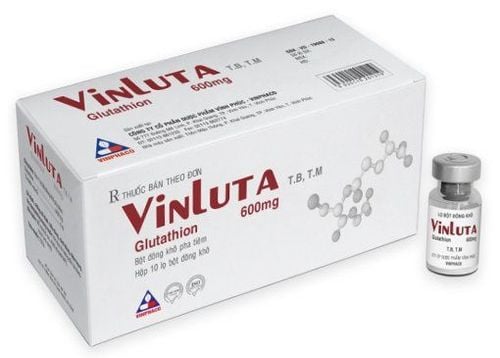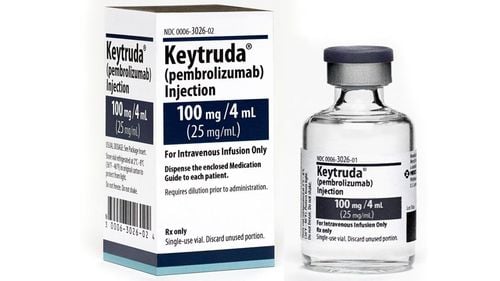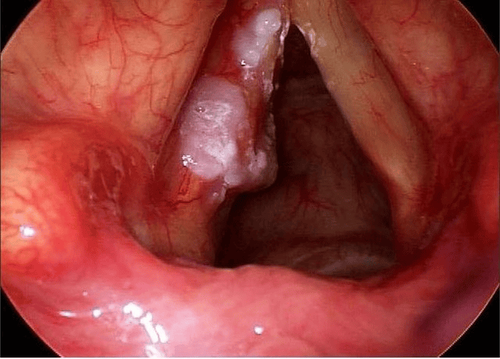This is an automatically translated article.
Targeted therapy in cancer treatment is increasingly being used to limit tumor growth. Drugs are often used for patients with advanced and distant metastatic cancer, when surgical treatments or radiation therapy cannot solve them.
1. What is targeted therapy?
Targeted therapy in cancer treatment is the use of drugs or chemicals that stop the growth and spread of cancer cells by interfering with specific molecules involved in the growth and development of cancer cells. development, progression, and spread of cancer.
Each type of cancer will have different targeted drugs. Unlike chemotherapy or radiotherapy, targeted drugs when entering the body only kill cancer cells without harming healthy cells. As a result, the tumor is prevented from growing, spreading, or even disappearing.
Targeted therapy differs from conventional chemotherapy in a number of ways:
Targeted drugs target the specific cells involved in the cancer, while most chemotherapy standard therapy acts on all cancer cells and normal cells that divide rapidly;
Targeted therapy works by interacting with specific targets, while standard chemotherapy is determined to kill cells; Most targeted drugs will block the proliferation of malignant cells, while chemical agents are usually cytotoxic. Targeted therapies are currently at the heart of cancer drug development. This therapy is seen as the foundation of precision medicine by using genetic information of human genes and proteins to prevent, diagnose and treat disease.
MORE: What type of cancer can targeted therapy treat?
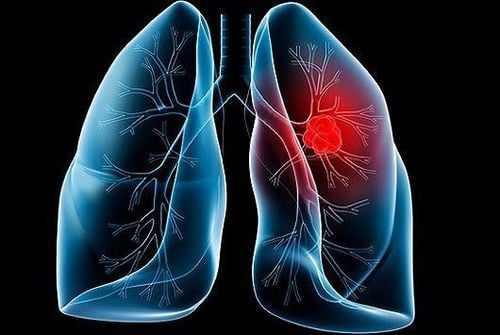
Liệu pháp nhắm trúng đích trong điều trị ung thư
2.Side effects of targeted drugs
Scientists expect cancer treatment with targeted therapy will have the advantage of being less toxic than traditional chemotherapy, because the target of targeted drugs focuses on cancer cells rather than cells. normal. However, the side effects of targeted drugs are still significant.
2.1. Skin problems Side effects of targeted skin medications include rashes or other skin changes. These undesirable effects usually develop slowly over the course of a few days to several weeks after starting treatment. These signs should be distinguished from drug allergy.
Allergic reactions to targeted drugs usually have a sudden onset (within minutes to hours of drug administration). Signs of an allergic reaction include hives (marks on the skin that last a day or longer) and intense itching. Some symptoms of a severe allergy include difficulty breathing, dizziness, sore throat, chest pain, or swelling of the lips or tongue.
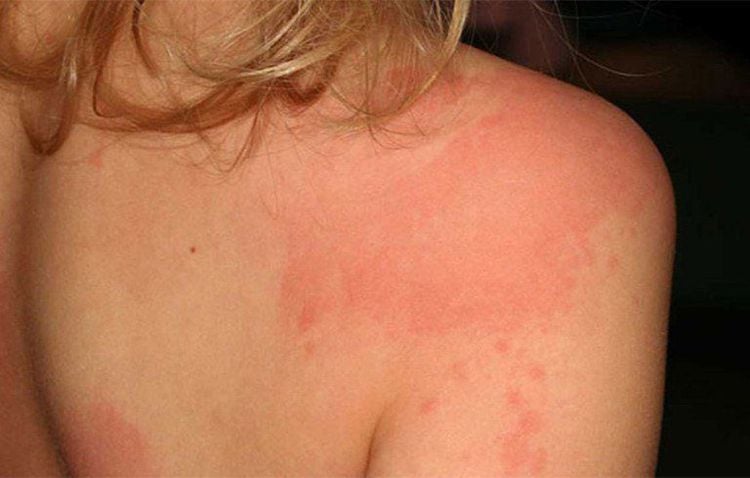
Phát ban là dấu hiệu dị ứng thuốc điều trị đích
Rash: This is the most common side effect of targeted skin medications. The risk of rash and severity depend on the type and dose of the target drug. In most cases, the rash is mild, presenting as acne on the scalp, face, neck, chest, and back. More serious can appear in other parts of the body; The rash usually begins with redness and swelling of the skin. The first few weeks of cancer treatment with targeted therapy are often the worst. About a month later, the skin begins to scab, very dry and red. Several weeks later, red, round, flat or raised nodules appear on the surface of the skin with pus in the center. In some patients this can lead to skin infections. The rash may be accompanied by itching, burning or stinging and may be painful. The severity of the rash may decrease or persist for the remainder of the treatment period and will resolve completely by discontinuing treatment for about one month; Dry skin: This is very common with many targeted medications. Dry skin may develop within the first few weeks, but most patients on targeted therapy experience dry skin after 6 months of treatment. The skin will be very dry, brittle, itchy, scaly and even cracked, often on the hands and feet; Itching: Signs of a rash, dry skin may be accompanied by an uncomfortable itching sensation; 2.2. Red, sore around fingernails and toenails Possible side effects of targeted medications are swelling, redness, and soreness around fingernails and toenails. This condition often occurs with the toes and thumbs. These lesions may be superinfected. In particular, fingernails and toenails can become brittle and grow more slowly.
2.3. Hand-foot syndrome (HFS)

Hội chứng bàn tay-chân (HFS) ở bệnh nhân điều trị ung thư
Hand-foot syndrome (HFS) has been linked to many cancer drugs, including targeted therapy. The cause of HFS syndrome is still unclear. This condition can be caused by damage to the small blood vessels in the hands and feet or by medication leaking out of the blood vessels and causing damage.
Pain, itching or numbness in the hands and feet are the earliest symptoms of HFS. Then the palms and feet become red and swollen, similar to sunburn and sometimes blistered. The affected skin becomes dry, flaky and cracked.
HFS causes pain, affecting the patient's ability to walk and perform daily activities. If symptoms of HFS are too severe, pain medication may be necessary. It is important to notify your doctor immediately when you notice signs of this syndrome because early treatment helps prevent it from getting worse.
2.4. Changes in hair growth Certain targeted medications can make a patient's hair thinner, dry and brittle or even frizzy. Prolonged use of cancer drugs can lead to baldness or complete hair loss.
Besides, facial hair in both sexes can grow and grow faster than normal. These changes usually do not occur immediately, but with long-term treatment these changes are more likely to occur.
2.5. Changes in hair or skin color A side effect of a targeted medication can cause the skin or hair to turn yellow. In some other patients, the hair and skin become darker. This tends to go away after treatment ends.

Khi dùng thuốc điều trị đích có thể làm da chuyển sang màu vàng
2.6. Changes in the eye and the area around the eye The patient's eyes may be burning, dry, or red. In some people, the eyelids become red, tender and swollen, and the eyelashes may dry out. When the eyelids are deformed or dry for a long time, it can damage the cornea. Talk to your doctor to note these changes and prevent injury, pain, or infection.
2.7. High blood pressure Some targeted drugs, especially angiogenesis inhibitors, can increase a patient's blood pressure. The patient may not be able to prevent this side effect, but the doctor will need to monitor the patient's blood pressure more closely. Some patients need medication to keep their blood pressure at a safe level during cancer treatment.
2.8. Blood clotting disorders Some targeted drugs interfere with the growth of new blood vessels and lead to patients prone to bruising and bleeding, a rare side effect. It's important to spot these signs because there's really no way to stop them.
Bleeding (including gastrointestinal bleeding) can be serious and even life-threatening. Therefore, tell your doctor right away if you have blood in your stools, dark or black stools, or bright red blood in your stools.
Side effects of targeted drugs can include blood clots in the lungs and lower extremities, as well as heart attacks and strokes. Be aware of signs such as sudden swelling, pain in an arm or leg, chest pain, sudden shortness of breath, vision changes, muscle weakness, seizures or trouble speaking... and seek emergency medical help. .
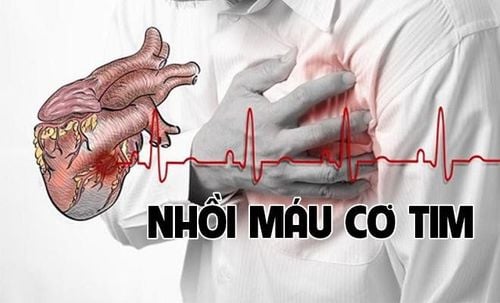
Tác dụng phụ của thuốc điều trị đích có thể gây ra nhồi máu cơ tim
2.9. Slow-healing wounds Targeted drugs stop the growth of new blood vessels and inadvertently interfere with wound healing. Because some medications have this side effect, they need to be stopped before any surgery, including minor dental surgery.
2.10. Heart damage Targeted therapy can damage the heart, especially when used with chemotherapy. Patients should be tested for cardiovascular function before starting cancer treatment. Symptoms of these side effects include chest pain, increased coughing, trouble breathing (especially at night), rapid weight gain, dizziness, fainting, or leg swelling.
2.11. Other targeted drug side effects Some of the side effects of targeted drugs are similar to standard chemotherapy drugs, and include:
Nausea and vomiting; Diarrhea or constipation; Mouth Sores; Shortness of breath; A cough; Frequent fatigue; Headache.
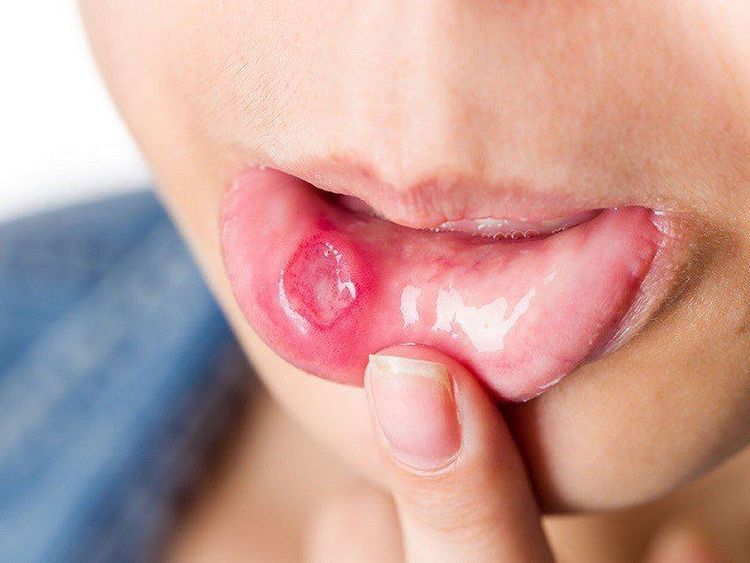
Lở miệng
3. How long do side effects last?
Not all patients using targeted therapy experience side effects. The severity of side effects varies depending on the drug and the patient's background. Most side effects including targeted drugs will go away with time after treatment ends and as healthy cells recover. Recovery time will vary from person to person, depending on many factors including the patient's overall health and the medications prescribed. Because targeted drugs are still relatively new, it's hard to give precise numbers on how long side effects last. However, there are some side effects of targeted drugs that last a lifetime when they cause long-term damage to the heart, lungs, kidneys or reproductive organs.
Currently, at Vinmec International General Hospital, most modern targeted drugs in the world are available to treat many common cancers. Targeted drugs at Vinmec are strictly tested and preserved, so they always keep the best quality. In addition, under close examination and monitoring, the use of appropriate doses and drugs can limit some of the side effects of targeted drugs for patients.
Customers who need medical examination and treatment at Vinmec can contact or directly go to the hospital for service.
Please dial HOTLINE for more information or register for an appointment HERE. Download MyVinmec app to make appointments faster and to manage your bookings easily.
References: cancer.gov, cancer.org




